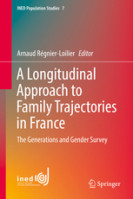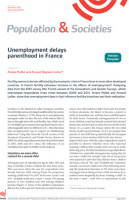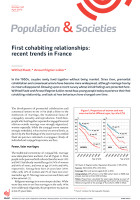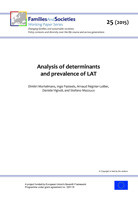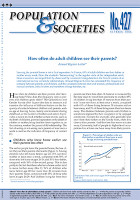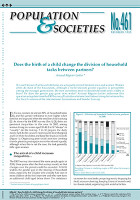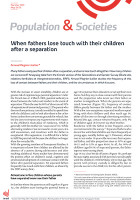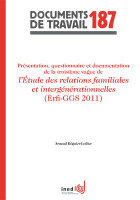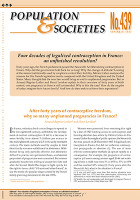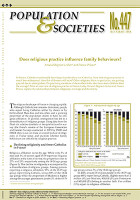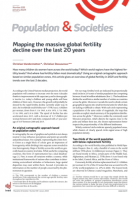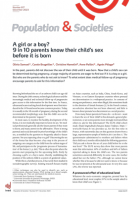
@@src2@@
Avoir des enfants en France
Désirs et réalités
Collection : Cahiers
n° 159, 2007, 284 pages
- Préface d'Henri Leridon
- Introduction
- Chapitre 1
De la non-maîtrise de la fécondité à la planification des naissances Avant le XVIIIe siècle. Une fécondité dite « naturelle » ?À partir du XVIIIe siècle, une fécondité de plus en plus dirigéeAvec la contraception médicale, l'infécondabilité devient la norme - Chapitre 2
Programmer les naissances : un comportement pas si facile à admettreLes couples stériles face à la planification des naissancesLe déni du calculLa revendication du « naturel » dans la fécondité contemporaine - Chapitre 3
L'entrée en parentalitéMariage et fécondité, quel lien ?Stabilité matérielle, condition nécessaire ou alibi du report ?Profiter de la vie de couple avant d'avoir des enfants - Chapitre 4
Du choix de l'espacement entre les naissances au choix du signe astrologiqueEspacement entre les naissancesRépartition des naissances dans l'année - Chapitre 5
Les stratégies, reflets d'expériences ?Combien d'enfants dans la famille ?Quand avoir ses enfants ? - Chapitre 6
Entre vie familiale et vie professionnelle : quelles stratégies ?Identité sociale des femmes en France : entre activité et maternité
Ajustement de l'activité professionnelle au projet de fécondité
Ajustement de la fécondité au projet professionnel - Conclusion
- Annexes
- Références bibliographiques et sources statistiques
Though humans have sought to control their fertility since ancient times, often using crude and largely ineffective techniques (iron filings, amulets, coitus interruptus, etc.), the arrival of the pill and the intra-uterine device in the 1970s brought a radical change in behaviour and in attitudes towards parenthood. Modern contraceptive techniques have enabled women to seek fulfilment through work or interpersonal relationships for example, without abandoning their desire for children.
Contraceptive coverage is now almost total in France. Contraception is used mainly by women and remains effective throughout the ovulatory cycle. Having a child thus involves a deliberate and measured decision to stop contracepting. Yet a certain ambivalence persists: contraception has become so routine and natural that the couples interviewed do not always feel that they are adopting a deliberate strategy. Moreover, the reality of planned and programmed births challenges their perception of reproduction as a spontaneous and disinterested act. Yet current contraceptive practice necessarily involves a rationalization of childbearing behaviour, affecting both the number and the timing of births.
The findings of INED and INSEE surveys and the accounts of 45 interviewed couples shed light on how personal experience, and the social, professional and family environments influence family formation, i.e. the desired number of children, the timing of births and the spacing of pregnancies. Couples generally wait for the right moment - a stable job and a certain level of material comfort - before starting a family. Some couples even try to plan the month of birth, either to fit in with their work schedule (teachers, for example, who aim for April or May so that maternity leave is followed by the summer holidays) or for financial reasons (a birth in December entitles the parents to tax reductions for the entire calendar year). Yet a proportion of couples are unable to have a child naturally and must resort to assisted reproductive technologies or adoption if they wish to found a family.
Contraceptive coverage is now almost total in France. Contraception is used mainly by women and remains effective throughout the ovulatory cycle. Having a child thus involves a deliberate and measured decision to stop contracepting. Yet a certain ambivalence persists: contraception has become so routine and natural that the couples interviewed do not always feel that they are adopting a deliberate strategy. Moreover, the reality of planned and programmed births challenges their perception of reproduction as a spontaneous and disinterested act. Yet current contraceptive practice necessarily involves a rationalization of childbearing behaviour, affecting both the number and the timing of births.
The findings of INED and INSEE surveys and the accounts of 45 interviewed couples shed light on how personal experience, and the social, professional and family environments influence family formation, i.e. the desired number of children, the timing of births and the spacing of pregnancies. Couples generally wait for the right moment - a stable job and a certain level of material comfort - before starting a family. Some couples even try to plan the month of birth, either to fit in with their work schedule (teachers, for example, who aim for April or May so that maternity leave is followed by the summer holidays) or for financial reasons (a birth in December entitles the parents to tax reductions for the entire calendar year). Yet a proportion of couples are unable to have a child naturally and must resort to assisted reproductive technologies or adoption if they wish to found a family.
Arnaud Régnier-Loilier est chercheur à l'Ined et étudie les comportements contemporains de fécondité, la planification des naissances, les questions familiales et de conjugalité en France. Il est responsable scientifique de l'enquête Erfi (2005, 2008 et 2011).




